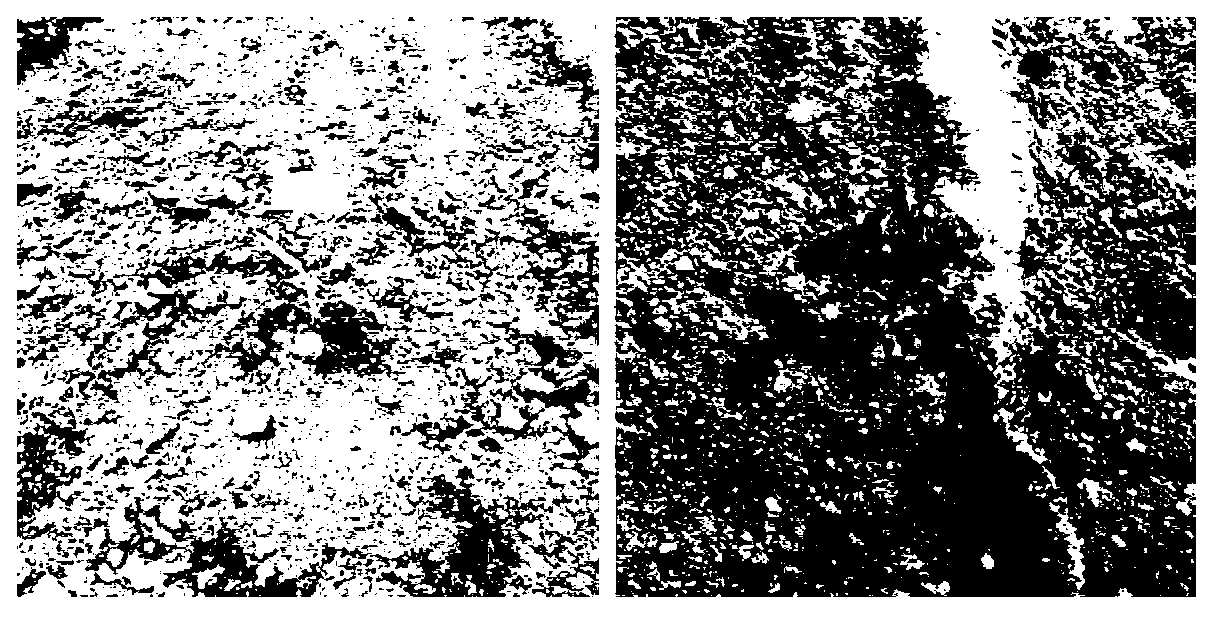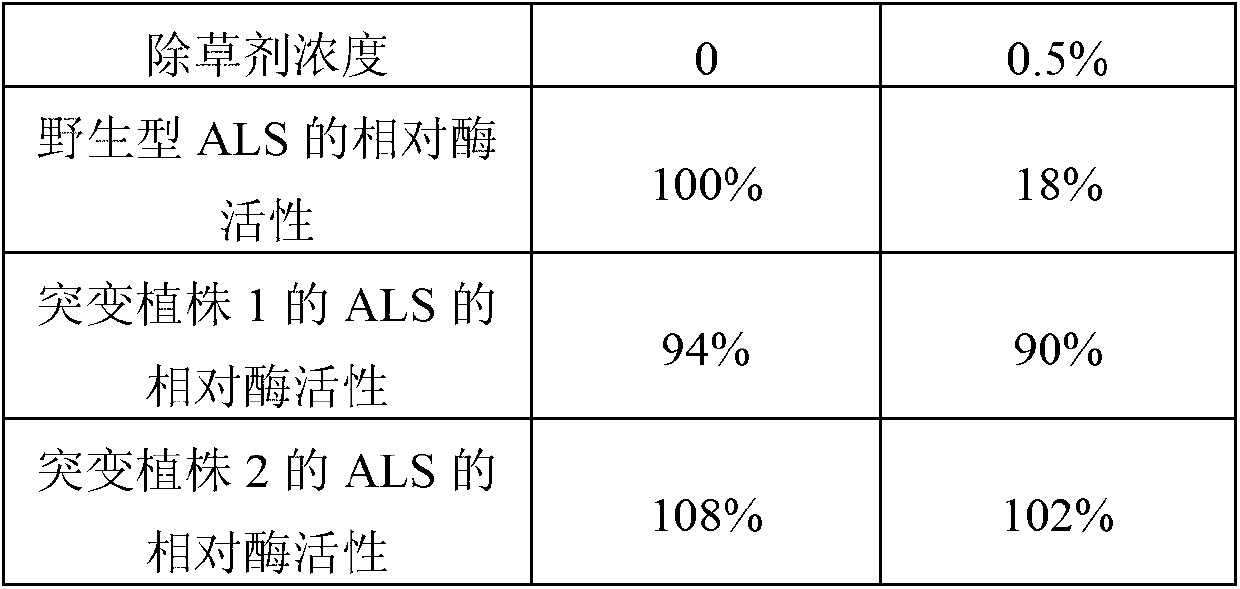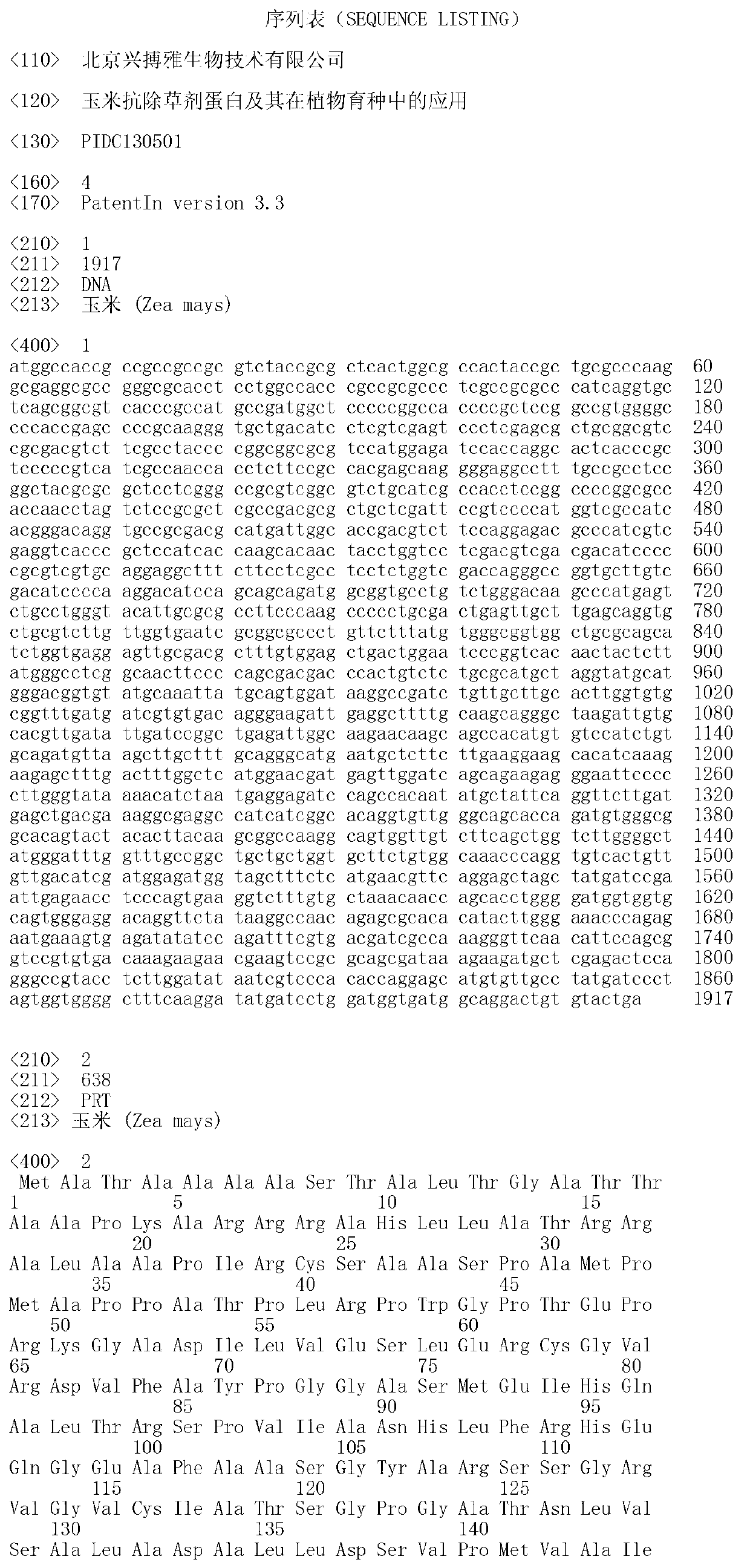Herbicide-resistant corn protein and application thereof in plant breeding
A herbicide and plant technology, applied in the field of plant protein, can solve problems such as impossibility of practical application, loss of herbicide resistance, abnormal growth and development of corn, etc.
- Summary
- Abstract
- Description
- Claims
- Application Information
AI Technical Summary
Problems solved by technology
Method used
Image
Examples
Embodiment 1
[0034] Example 1 Extracting protein mutants resistant to imidazolinone herbicides from Beijing No. 21 mutant plants
[0035] Sow various varieties / lines of corn, including corn inbred line Jing 21 (available from the Corn Research Center of the Institute of Crop Science, Chinese Academy of Agricultural Sciences). Nicotinic acid ((RS) 5-ethyl-2-(4-isopropyl-4-methyl-5-oxo-3-imidazolin-2-yl)nicotinic acid, CAS No. 81335-77-5) water (concentration of 0.5%, purchased from Shandong Xianda Chemical Co., Ltd.) was soaked for 18 hours, drained and sown in the experimental field, and the germination of corn seeds was observed after 10 days. After a lot of experimental screening, I finally discovered by chance that there are green seedlings that continue to grow ( figure 1 ), retained and propagated these green seedlings, and confirmed that they were 2 Jing 21 mutant plants resistant to imidazolinone herbicides. These plants could grow and develop normally, and the rest of the corn die...
Embodiment 2
[0037] The in vitro activity assay of the anti-imidazolinone herbicides of embodiment 2 protein mutants
[0038] Refer to the method of Fan ZJ et al. (Specific activity determination of acetolactate synthase from maize (Zea mays L.). See Han WN et al., The Proceedings of the18th Asia-Pacific Weed Science Society Conference.515-522.May28-June2, 2001. Beijing: Standards Press of China.), extracted the ALS enzymes of the wild-type and mutant plants of the above-mentioned Jing 21, and determined the rate of inhibition of the corresponding enzyme activity by imidazolinone herbicides. In brief, take 5g of each plant seedling and chop it up, add 10mL of pH7 50mmol / LK 2 HPO 4 -KH 2 PO 4 Buffer (which contains 1mmol / L sodium pyruvate, 0.5mmol / L MgCl 2 , 0.5 mmol / L TPP, 10 μmol / L FAD), ground and pulverized with quartz sand, filtered with 8 layers of gauze, and the filtrate was centrifuged at 4°C and 20,000 rpm for 30 minutes. Take the supernatant, add ammonium sulfate to make it r...
Embodiment 3
[0042] The acquisition of the transgenic plant of embodiment 3 transprotein mutant gene
[0043] Beijing Weiming Kaituo Agricultural Biotechnology Co., Ltd. was entrusted to use the conventional Agrobacterium-mediated method to transfer the gene encoding the mutant ALS enzyme of the above-mentioned Jing 21 into wild-type Arabidopsis plants. In brief, use the forward primer (5'-CCGTCCGGTCTGTAGCGTGTAC-3') and the reverse primer (5'-CATAACAGATAGCTGACGGCCTAC-3') to PCR amplify from the genomic DNA of the above-mentioned Jing 21 mutant plants After the mutant ALS gene was sequenced correctly, clone the ALS gene whose nucleotide sequence is shown in SEQ ID NO: 1 and 3 into the pCAMBIA1303 plasmid (purchased from Cambia Company), select the positive clone and transform it into Agrobacterium AGL0, and culture the cells And transform Arabidopsis thaliana, PCR identified transformation-positive Arabidopsis thaliana after harvesting to obtain transgenic seeds of the T1 generation, spraye...
PUM
 Login to View More
Login to View More Abstract
Description
Claims
Application Information
 Login to View More
Login to View More - R&D
- Intellectual Property
- Life Sciences
- Materials
- Tech Scout
- Unparalleled Data Quality
- Higher Quality Content
- 60% Fewer Hallucinations
Browse by: Latest US Patents, China's latest patents, Technical Efficacy Thesaurus, Application Domain, Technology Topic, Popular Technical Reports.
© 2025 PatSnap. All rights reserved.Legal|Privacy policy|Modern Slavery Act Transparency Statement|Sitemap|About US| Contact US: help@patsnap.com



